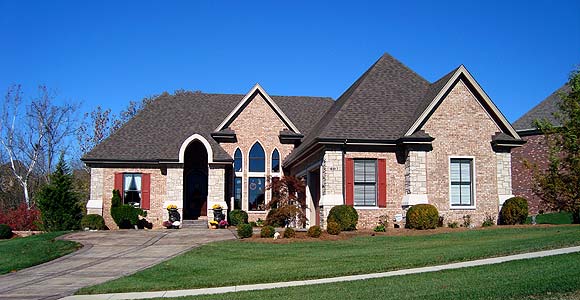When designing or renovating a home, many elements come into play to create a distinctive style: the architectural lines, the facade, the landscaping, and the interior decor. However, one crucial aspect often overlooked is the roof. Let’s look at five roof properties and how they work.

5 Roof Properties
More than just a functional component protecting your home from weather and wear, the roof can play a major role in defining your home’s aesthetic appeal and overall design.
While a roof’s primary purpose is to shield your home from the elements, its design, color, and materials can significantly influence your home’s style, enhancing its character and curb appeal. Let’s delve deeper into how roof properties shape the appearance and perception of your home. After all, no one wants roofing mistakes to waste time and money.
1. Architectural Compatibility
First on our list of roof properties is architectural compatibility. The architecture of your home significantly dictates the type of roof that will be suitable. The roof design should complement the architectural style, whether it’s a modern flat roof for a minimalist home, a gabled roof for a traditional colonial house, or intricate, high-pitched roofs for Gothic or Tudor-style homes. The right roof design can enhance and emphasize your home’s architectural elements, contributing to a cohesive aesthetic.
2. Color and Texture
Color and texture can dramatically change the look of a house. Light-colored roofs reflect heat, making them ideal for warmer climates, while darker roofs absorb heat, making them suitable for cooler regions. The color of your roof can either contrast or harmonize with the rest of your home’s exterior, creating a striking or subtle aesthetic. Similarly, the texture of your roofing material, whether smooth (as with metal roofing) or rough (as with asphalt shingles or clay tiles), can add an extra dimension to your home’s design.
3. Material Choices
Next on our list of roof properties is an obvious one—material. The material of your roof is not just a practical decision; it also influences the style of your home. Slate roofs suggest elegance and longevity, while terracotta tiles evoke a Mediterranean feel. On the other hand, metal roofing can create a modern, industrial aesthetic. The material you choose can either make your home blend in with its surroundings or stand out as a unique piece of architecture.
4. Environmentally Friendly Options
A growing trend in roofing is the use of environmentally friendly materials and designs. Green roofs, solar panel installations, or cool roofs can not only reduce your home’s environmental impact but also give it a modern, eco-conscious appearance.
5. Installation and Maintenance
Your choice of roofing contractor can make a substantial difference in realizing your vision for your home’s style. Professional contractors bring their expertise and knowledge of the latest trends and materials in the roofing industry. They can provide valuable advice and suggestions to ensure your roof complements your home’s style while providing the best protection.
And we haven’t even talked about professional installation which is key. A poorly installed roof can be a nightmare for homeowners. Time, money, and stress will all be present if you wake up to water dripping through your roof into your home. Make sure to do your homework before selecting the best roofing contractor for your situation.
In summary, your roof plays a pivotal role in defining your home’s style. It can harmonize with or provide a contrasting accent to your home’s overall design. By considering architectural compatibility, color, texture, materials, and the input of professional contractors, you can leverage your roof to enhance your home’s aesthetics and make a lasting impression.



